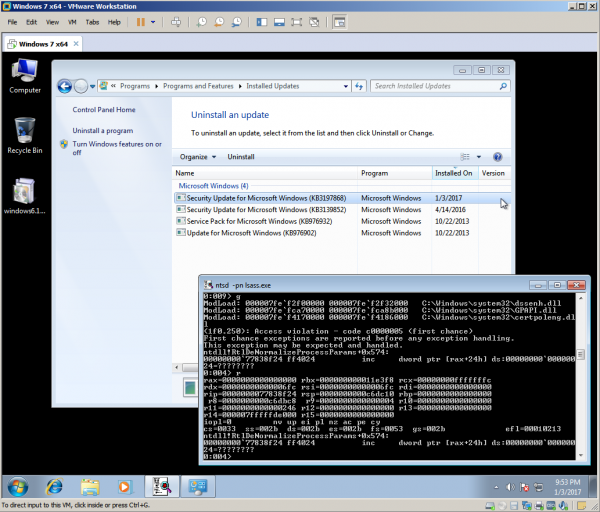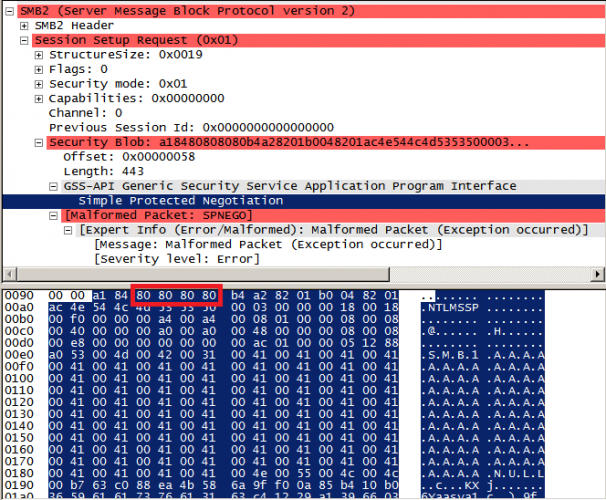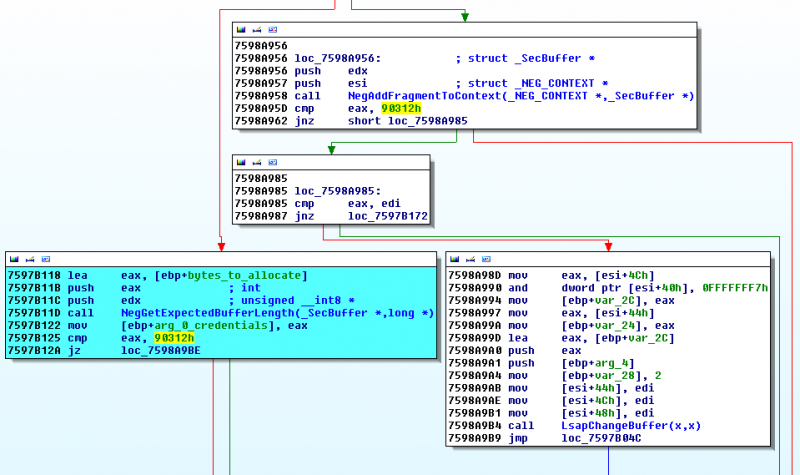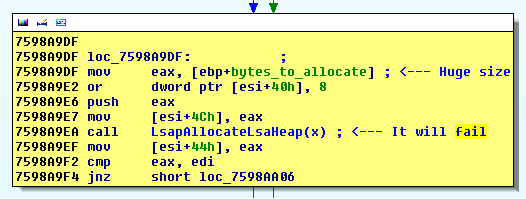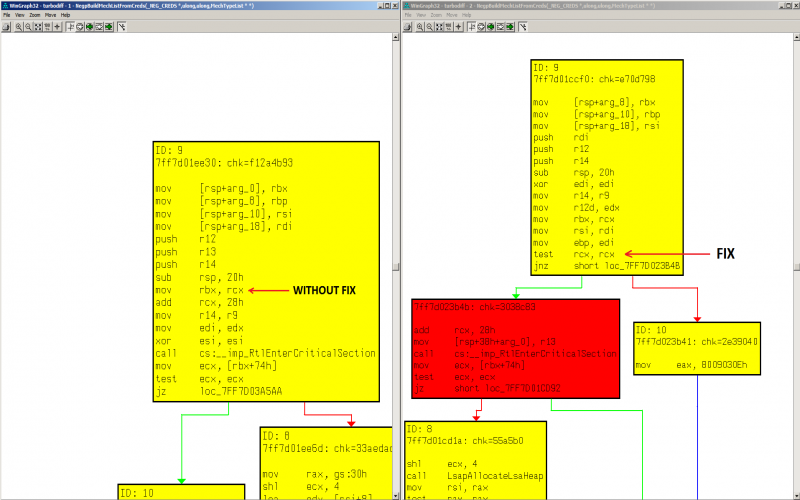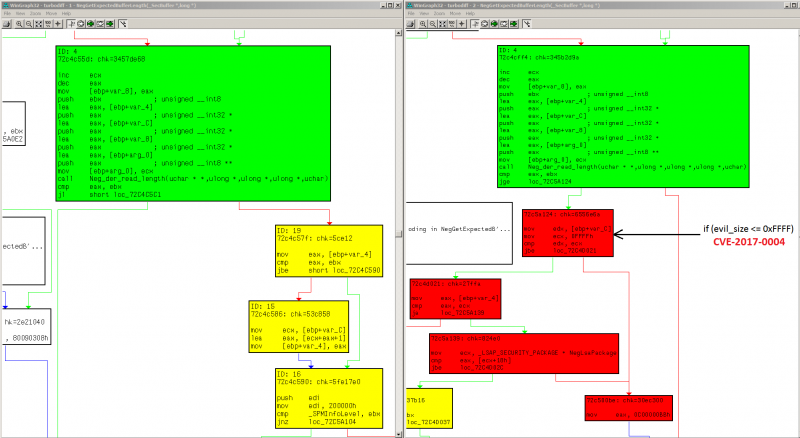Triggering Windows 8.1/10 ?
Although the public PoC doesn't trigger the vulnerability in Windows 8.1 or Windows 10, the researcher and Microsoft declared these Windows versions as vulnerable.
Let see why.
As I said before, the "NegGetExpectedBufferLength" function reads the evil size from the SMB packet.
Now, this function has to return the 0x90312 value (SEC_I_CONTINUE_NEEDED) to produce the fail in the huge allocation.
Unfortunately, in the latest Windows versions, an extra check was added in this function which compares the evil size against 0xffff (64KB).
If the evil size is greater, this function won't return the 0x90312 value, but rather this will return the 0xC00000BB value (STATUS_NOT_SUPPORTED), which won't produce any allocation fail resulting in the vulnerability not being triggered.
On the other hand, if we use the evil size with a value less or equal than 0xffff (64KB), the allocation won't fail and again, the vulnerability won't be triggered.
So, why are Windows 8.1 and Windows 10 vulnerable?
Although the bug is triggered when a memory allocation fails, that doesn't mean that the allocation has to be giant, but rather that the LSASS service doesn't have enough available memory to allocate.
I had been able to confirm that this vulnerability can be triggered in Windows 7 and 2008 R2 by establishing several SMB connections and sending evil sizes with values like 0x1000000 (16 MB).
The problem is that in the case of the latest Windows versions, it's not possible to use this kind of sizes, because as I said before, the limit is 64KB.
So, the only way to trigger this vulnerability should be by producing a memory exhaustion in the LSASS service.
It may be possible to do so by finding a controllable malloc in the LSASS authentication process, creating multiple connections and producing a memory exhaustion until the "LsapAllocateLsaHeap" function fails.
Maybe, this memory exhaustion condition could be easily reached in local scenarios.
Final notes
I realized that the fix wasn't working when I tried to understand why the public PoC wasn't working against Windows 10.
It's surprising to see that nobody else noticed that –that we know of-, and that a considerable amount of Windows users have been unprotected for more than 2 months since the public exploit was released.
As of January 10th, Microsoft decided to release a new security bulletin including a patch for the affected systems (MS17-004).
If we diff against the latest "lsasrv.dll" version (v6.1.7601.23642), we can see that the vulnerability was fixed by changing the "NegGetExpectedBufferLength" function.
Basically, the same 64KB packet size check used by Windows 8.1 and Windows 10 was now added to the rest of the Windows versions.
